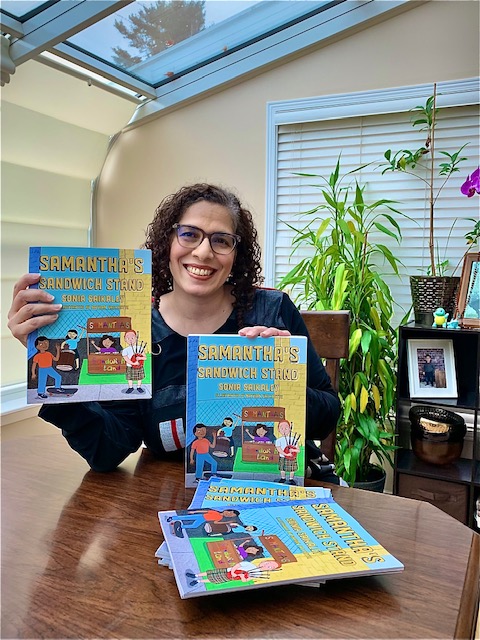The
Scribbler was hoping to interview St. Nick again but the PR department at SC Enterprises
has asked us to interview Mrs. Claus instead. Very little is known about her
and the head elf in the PR Dept., Slipknot
Boomside (people call him Slippy), felt it should change.
The last
time we had the opportunity to speak with Santa was in December 2019. Due to
the world-wide pandemic in 2020, we had to forego an interview with the
man-in-red due to his hectic schedule. Preparations were unlike any other, so
we did a recap of Santa’s interviews to the Scribbler last year. Have a peek
HERE.
The
Scribbler is more than pleased to have Mrs. Claus as our guest.. Wow. WE ARE
IMPRESSED. What a lady. We didn’t know……..
Allan: So, Mrs. Claus….
Mrs.
Clause: Oh please call me Svetlana. None of
this Mrs. Claus stuff.
Allan: Um… okay, Svetlana. Nice name by the
way. Sounds Russian. Before we get into the interview, let’s tell our readers
about the photo above. The one Slippy from PR sent us. Titled - The New You.
This is not the little old lady we’ve become accustomed to. You know, heavy
set, the long dress, the ever-present apron, hair in a bun, granny glasses…
Svetlana: The image of the kindly, cookie
making Mrs. Santa was a product of our PR department began in the early twentieth
century, probably back around 1910 or so. There wasn’t a Mrs. Claus actually;
it was all a figment of everyone’s imagination, from well know authors and
poets who chose to romanticize the old guy. For the benefit of children
everywhere and other true believers, it was felt he should be married. I mean,
really, who would ever think a bachelor would be a Santa Claus, or Sinter
Klass, as he was known back then. A female companion adds warmth, hominess, you
know. But the twenty-first century calls for a new image and in this case, the
real me.
Allan: Back in 2019 in Santa’s last
interview, he mentioned how you two met, when you were a nurse. His description
of you fits with the image above. How come you don’t age?
Svetlana: Ah, the mystery of the North Pole.
No one ages here. We all get older but the beauty of youth lingers.
Allan: Like magic?
Svetlana: Not really magic, like pulling a
rabbit from a top hat, or sleight of hand. It’s…; well it’s difficult to
explain. It’s mystical…, dream-like. A moment in time and space where nothing
changes. It really is quite beautiful.
Allan: Where are you from? Were you really a
nurse, or is that part of the myth?
Svetlana: I’m from Siberia. My father was a reindeer
herder, part of the Lapp community. I actually met Santa when I was only six. He
was looking for reindeer to pull his sleigh. Oh gosh, he was so handsome. Oddly
enough he took the reindeer with the shiny nose everyone had neglected. Of
course, you’ve heard of him, Rudolph. When he left, he gave me a doll. I still
have it. I moved to Australia when I was twenty. I wanted to heal people and
truthfully, I was tired of the cold. And look at me now, back in the cold in
the North Pole.
I was
working the midnight shift when they brought him in. He remembered me and asked about the doll. We fixed
him up and poof, he disappeared. I knew we had worked on him for at least two
hours and when he left, I checked the clock and only two minutes had gone by.
Part of the mysticism I spoke of earlier. We’ve been together ever since.
Allan: I know this might be personal but do
you and Santa still… you know…
***There is no response
from Svetlana but the wide smile and blushing cheeks tells me enough.
Allan: Do you still bake cookies, look after
the elves, and such?
Svetlana: Not any longer. When Santa stopped
eating all the cookies and sweets people left for him, I mean he was getting so
big and all the food made him sluggish, he couldn’t do anything for weeks after
he returned. People took the hint and now they leave him money, so we are quite
well off. We have the elves to look after the chores. I spend a lot of my time
writing letters to the kids and sign Santa’s name. There are just too many for
him. I spend time at my spa. I meet with women all over the world, especially
those in need of support. I work hard for women’s rights and equality.
Allan: As Mrs. Clause?
Svetlana: No. As Svetlana Tsvetkova. No connection to Santa at all.
Allan: Oh, you’re that Svetlana? I’ve heard
of you and would’ve never known. Yes, you do wonders. Before we sign off
Svetlana, is there anything else you’d like to tell our readers?
Svetlana: Yes. To everyone, it is not enough
to just ‘be good’ at Christmas time. You need to reach out to your fellow man
and woman and commit yourself to at least one act of kindness each day. Smile to strangers. Hold the door open, help
the old person across the street, let someone cut in front of you, do something
nice unexpectedly… just be nice all year round.
Thank you
Svetlana… Mrs. Claus… for being our guest this week.
… and poof! – she disappears!
This, of
course, is the last post of the year. I owe so much to many spectacular guests
and to you, my dear readers. I need to thank many people for making 2021 great. I hope you all know I appreciate every one of you, from the bottom of my
heart.
MJ LaBeff.
Chuck Bowie. Steve Chiasson. Sally Cronin. Susan Toy. Marjorie Mallon, Angela
Wren. Debby Geis. James Fisher. The Miramichi Reader. Susan Jardine. Stephen Shortall. Leonard
Shortall. Bernie & Jacinthe Blanchard. Paul Blanchard. The Seasonal
Collective. Lucille Robinson. Andy Gill.
Cynthia Murray. John Roberts. Darlene Daigle. Lisa LeBlanc. Mill Cove Coffee.
Chapters. Et al.
The
next post will be January 1, 2022 and there are exciting changes coming to the
Scribbler. A new format, new colors, new (and old favorite) guests. I’ll tell
you more then.








































